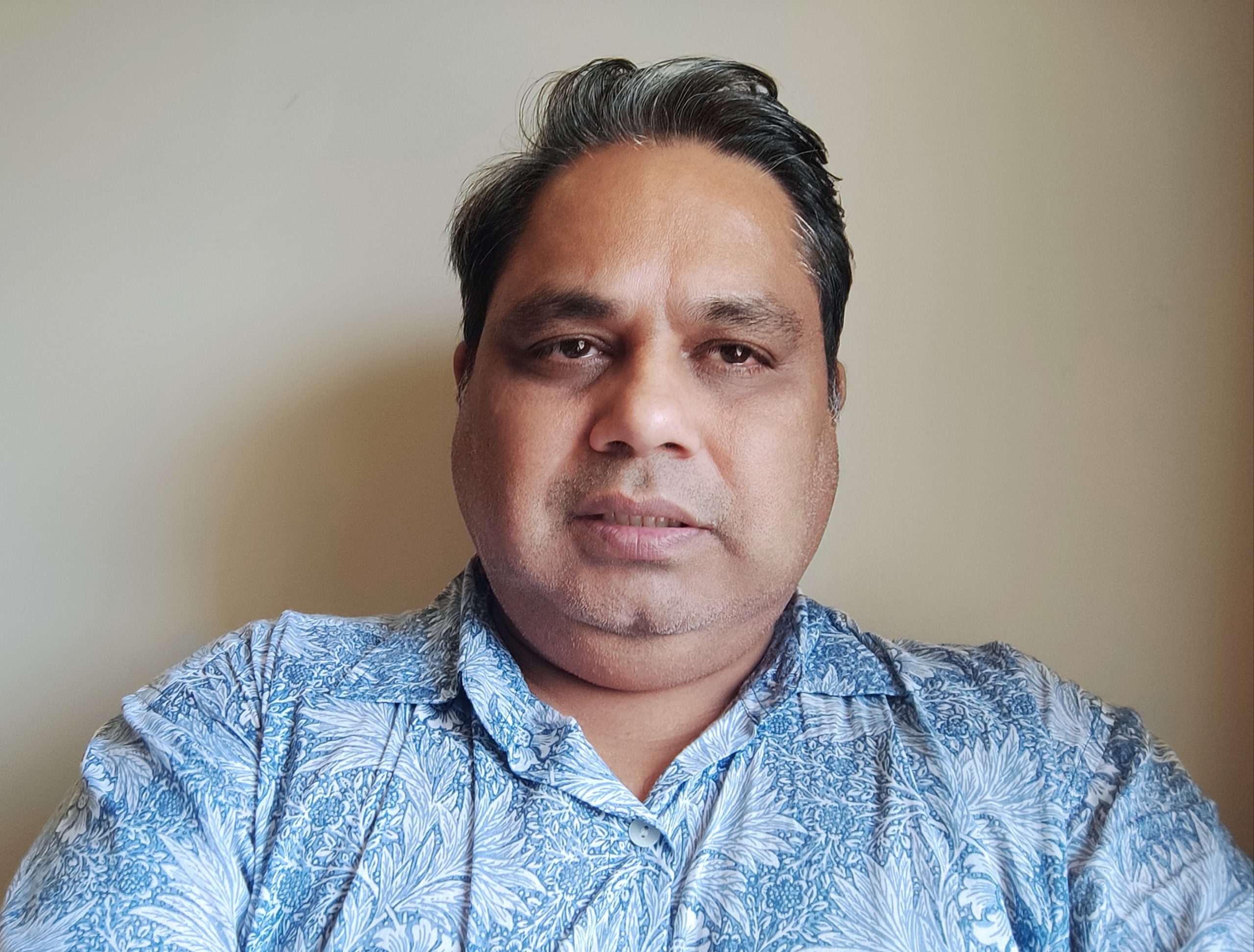The State of Preparedness of India’s Economy & Health Sector in the Era of Pandemic
Pandemics are inducing unforeseen national crises and are endangering both lives and livelihoods unprecedentedly. Of all the varieties of pandemics that we have had so far , Coronavirus 19 originating as an innocuous micro-organism has created perhaps the most intimidating maelstrom and has already created unprecedented social turmoil, inflicting debilitating infirmities and fatalities apart from crippling governance and inter-related federal sectors such as health , human sustenance and the economy thus positing serious challenges to States and their governing mechanisms universally. Currently it has killed more than sixty-six lakh lives worldwide. India registering in this context holds the ignominous position of being the country with the second highest deaths in the world with five and a quarter lakh deaths. What is more dangerous is the fact that the deaths have not stopped despite emergence of vaccines. The Covid 19 has overwhelmed India and its medical infrastructure, economy, and people’s livelihoods. Its economic structure is under seize. Largely, because it’s public healthcare institutions historically have remained neglected and underinvested and are not robust to tackle its challenges.

SUBHENDU RANJAN RAJ
University of Delhi
The recommended 5-6% of country’s GDP expenditure – the bare minimum required for public health has been elusive. Indian economy has been disrupted because of crippling enforcement measures which led to cascading industrial shutdown, suspension of tertiary and secondary sectors and large unemployment thereafter. Economic malaise is complicated by the nature of India’s economy – largescale informalisation of labour, vulnerable unorganised and migrant labour sector, over dependance on State welfare and subsidies. In general, the disruption in economic flows of supply, distribution and consumption that lockdown ensued have impacted normal life, created unemployment and suffering . State governments have been constrained in their responses towards the pandemic because of financial limitations.
The public health sector
India historically has had a very poor record in medicine and hospice care. India’s public expenditure on health is even far lower than countries that are classified as the “poorest” in the world, the Union Ministry on Health and Farmily Welfare of the government of India itself has conceded. Health expenditure figures show that India spends only 1.28% of its GDP (2018-19) as public expenditure on health according to the National Health Profile (NHP) data (compiled by Central Bureau of Health Intelligence, a nodal agency of the Ministry of Health & FW). State investment in health has remained stagnant for the last two decades at around 1.1% of India’s GDP. NHP data (2016) shows that India’s neighbours, such as Sri Lanka (1.68%), Indonesia (1.40%) are spending more than India on healthcare, whereas even nations nomenclatured as Lower Income Countries by the World Bank spend about 1.57 % of their GDP on health. Latest data available (as of 2018-19) shows that India spends only 1.28% of its GDP as public expenditure on health according to the NHP. (1)
Not only is the mandatory infrastructural spending missing , there has been no newlegislation or Act to deal with Covid’s medical fallout. India does not have a Covid Act like United Kingdom or Singapore . An overwhelming emergency induced by Covid 19 was sought to be dealt with existing laws made for different contexts. such as the Disaster Management Act of 2005 and the antiquated Epidemic Disease Act of 1897. We did not have a single PHE (public health emergency) preparedness Act. Therefore , both at the Centre and the State levels , a ragtag assortment ( hurriedly put together) of executive enactments and official orders were resorted to deal with the cascading crises. Some 4000 different orders were issued by the Centre in the first two months itself according to The Economist and the trend continued thereafter as well . In this process, the constitutional norms and procedures were given the go by as the Covid crises unfolded and immediate executive action was needed. As was to happen in such ad hoc circumstances a “containment” strategy was adopted and sought to be implemented . This was the approach since India had the dubious distinction of having the second largest number of active cases of infection worldwide consistently. Athough the number of deaths were relatively speaking lower in our context, Covid continued to inflict havoc, untold misery, and suffering. The suffering of the people occurred as much as by the Corona affliction, compounded many times due the fact that the government enforced the ‘world’s strictest lockdown’ as the panacea – as that seemed to be the most cost effective way of getting rid of the vermin and this was most savagely enforced. Although Ministry of Health & Family Welfare’s statistical analysis projected that non implementation of lockdown would have catapulted India to 8.2 lakh infections by Apr 15,2020 it is to be noted that severe lockdown enforcement and social distancing as methods to contain the contagious Coronavirus did not ipso facto eradicate the virus. As has been proven, such an approach merely delays its spread. A Three T’s approach (Tracking, Testing, and Treatment) is necessary to fight it. World Health Organisation (WHO recommended RAT / RTPCR testing and strict quarantine with tracking (and surveillance) on a massive scale. Really bad cases was to go through to the ultimate stage of intensive care/ hospital support as virus lead to irretrievable fatal pulmonary, cardiac, and neurological complications leading to death, for which ventilator, ICU facilities were required. Throughout the first and second ‘waves’, glaring shortages in all the recommended support areas – serious lack of testing kits for infected (RAT / RTPCR tests),ICU/ ventilators , PPEs(personal protection equipment) and peripherals, adequate hospital beds , Oxygen , safety equipment and shortage of doctors / neurologists, nurses etc were hampering mass scale testing and medical intervention.
In the second stage /wave of the pandemic in post March 2021 period the shortage of Covid vaccines ( Covishield , Covacin initially ) and the less than universal vaccination of the populace led to galloping progress of the infection nationwide , especially in the rural areas .Wherever sero-prevalence studies were done by the ICMR (Indian Council of Medical Research ), a governmental agency they showed a disturbing trend namely that about 40 % of the lay population ( those who had received no Covid vaccination) showed prevalence of Covid antibodies in their bodies ( which means that they possibly already had infection / or were asymptomatic and possibly recovered without any serious repercussions). This further highlighted the fact that the numbers of recorded active cases were under reported . The official figures were always less than the total numbers of Covid infected – a reason why international research community on Covid 19 ( such as Johns Hopkins University) treated the numbers sardonically. Clearly ad-hocism in dealing with Covid and the knee jerk policy responses to it has been repugnantly applied in the health sector , the negative impact of which are affecting people’s wellbeing, earnings and lives. This smacks of lack of such basic work ethics due to which people’s health and wellbeing have been jeopardized and innumerable lives lost unnecessarily. Sadly , there is no assurance that if there are further ‘waves’ to come (and there is no guarantee that there won’t be further mutations of the Coronavirus or any other viral contagion ) India would be better prepared on the health front.
The Economic malaise
An unprecedented fallout on the economic sector has been the bane for the Indian people. Covid impacted the entire economy and an estimated 136 million alongwith the vast unorganised working class of some 300 million were affected most severely by the grim scenario. There was a -23.9% contraction in India’s GDP in 2020. Whereas the economy grew at an average of 7.7% between 2003–17, its growth started to decline as the export and investment faltered. As a result, its annual growth fell serially and sharply from 8.3% in 2016–17. But due to Covid it declined to an abysmal 3.7% by 2019–20. (2)
Some prescriptions by leading economists including Nobel laureates have charted a resuscitation alternative from this grim scenario. They opined that even if India lacks financial muscle of the West, it can win over the Covid crisis by innovative policy strategies in economy and public health. These intiatives have to be in the form of enhanced 5% GDP spending as relief /stimulus packages , fiscal deficit be given a temporary supension for a year and monetary financing be resorted , free distribution of buffer stock of 75 MT of foodgrains etc. Indian economy has great resilience and therefore saving lives should be given top priority through public distribution / direct transfers without concerns that this would increase budget deficits then the economy will turn around. Last, but not least was their projected forecast that that even after this pandemic crisis India’s loss would be around 2% whereas Europe and US would be reeling under -6% and -2.8% GDP growth rate. Much of this premonition has occurred. In the background of the shocking GDP’s fall to -23.9% in Sept 2020 and -8.6% overall decline by 2021 the afore-mentioned optimism of economists has been questioned. (3) But later economic trends in 2022 (GDP rises to 4.1% by Quarter 1) have shown some recovery but they have not met many targets, and much improvement and priority investment in economic policies especially in health sector need priorititising.The deleterious impact on the economy has not ended two and a half years down the line after Covid emerged despite the relative slowing down of pace of Covid infections thereafter and as of Sept. 2022 it needs to be underlined that the economy has not yet recovered in many key sectors. The figures available indicate that the declining trend in all manufacturing industries especially in sector of MSME (which contributes majorly to the economic production) and contraction of the economy continues.
Indeed state welfarist objectives such saving lives/ ameliorating livelihoods should have been given top priority through public distribution /direct monetary cash transfers without concerns that this would increase budget deficits. That has not happened or happened minimalistically here whereas many countries in the world, not known especially to be of socialist / democratic orientation have been on the overdrive in implementing such welfarist outreach with better outcomes/ results.
Thus, it is perspicacious that as COVID 19 pandemic threw unprecedented challenges, and needed gargantuan efforts to save lives/livelihoods, health and economy policies especially have not been transformative. Humane policy interventions and remedial economic strategies ameliorate lives and livelihoods assume greater relevance now to escape not only the threat of immiserization from Covid pandemic but to meet new emergencies in the future . Truly, it will be a litmus test of India’s healthcare and economy.
In conclusion, I would highlight the following. First, despite rounds of states reorganization and state and sub-state formation in the region based on tribal ethnicity, tensions between tribal ethnicity and territoriality remains (Bhattacharyya 2019a). Second, the region’s experiment with sub-state level tribal self-governance has mostly worked which has played in important role in ethnic conflict management. Third, the Bodoland experiment provides an example when institutions sometimes do not work. Third, until the 1990s, both federalism and democratization had a limited purchase in the region, but since the 1990s, the states have demonstrated better performance records in terms of development and the rule of law. The Special Category Status of the States has been withdrawn, but their constitutional asymmetric status remains, and the fund flows from the Centre have multiplied.
NOTES
[1]See Indian Express (Nov 1,2019) “India’s public expenditure on health less than Lower Income Countries: Government data” , https://www.newindianexpress.com/nation/2019/nov/01/indias-public-expenditure-on-health-less-than-lower-income-countries-government-data-2055553.html (accessed on 2Apr,20)
[2] Sheel, Alok (2022) Assessing the Recent Indian Economic Growth August 20, Economic & Political Weekly vol LVII no 34 p.20
[3] Business Standard “India in historic technical recession,RBI ‘nowcast’ shows” Nov 12, 2020 https://www.business-standard.com/article/economy-policy/india-in-historic-technical-recession-rbi-signals-in-first-ever-nowcast-120111200122_1.html( accessed on 12 Nov ,2020)
Copyright: © (2022) The Author

